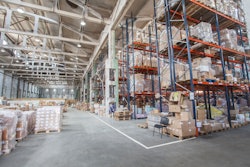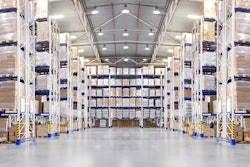
From aisles of empty shelves during the initial COVID-19 pandemic lockdown to recent shortages of basic necessities like baby formula, supply chain shortages have been a battle for years. And yet, despite the seemingly constant stream of product shortages, many organizations frequently struggle with a surplus of merchandise. Indeed, large retailers have all revealed having overstocked warehouses and will likely resort to hefty discounts to make room for seasonal merchandise.
While overstocked shelves can be the result of a variety of factors, such as inflation and changing consumer spending patterns, supply chain teams seek to minimize costs by adjusting their planning strategies to better forecast customer demands. Otherwise, organizations risk losing customers due to product shortages or substantial profit from discounts driven by an inventory surplus. Automation, such as predictive AI and machine learning technologies, is one way enterprises can streamline their supply chain operations, obtain faster and more accurate insights, and better balance supply and customer demand to prevent an excess (or shortage) of stock. Here’s how automation can help solve the current inventory surplus challenge.
An inventory surplus crisis
Inventory shortages have costly consequences for retailers and other organizations. However, an excess of inventory can have effects that are just as drastic. Some big stores disclosed an inventory increase, with employees feeling overwhelmed from sorting through never-ending boxes of overstock. The inventory systems have also been automatically ordering merchandise already in stock, pointing to a lack of smarter automation that accurately checks real-time stock levels and forecasts when it’s the right time to replenish.
As inventory surpluses are heavily impacting retailers, both from a financial and operations perspective, mounting piles of returns are only complicating the situation. Some big-box retailers are testing programs to pay customers to keep their unwanted items to prevent adding more stock to their overfilled shelves and reduce costly return processing. With employees fed up, profits taking a toll and operations in disarray, enterprises need tools that can help them make strategic decisions and ultimately enable them to succeed.
A lack of accuracy in supply chain planning
A surplus of inventory is often the result of a lack of planning on the organization’s end. A study conducted by McKinsey & Company found that nearly 80% of companies still leverage traditional sales and operations planning procedures that have little real-time decision-making or automation involved. Most of their processes bank on unreliable data sources and legacy IT systems and have limited coordination across functions. Without the right tools to accurately forecast supply chain disruptions and consumer spending patterns, enterprises will find themselves struggling to either fill up their empty shelves, or on the opposite side of the spectrum, eliminate heaps of excess inventory. Obtaining end-to-end visibility across the extended enterprise will be absolutely critical to preventing a stock surplus or shortage, but this should only be the first step in the process.
It’s time to turn to supply chain automation
Organizations need modern, automated technology that helps their supply chain operations move beyond mere visibility to predictive insight, intelligent automated processes and continuous re-alignment between plans and execution. Digital twins, for instance, provide a virtual model of the end-to-end supply chain. These tools leverage real-time, ground truth data across the entire supply chain, predictive modeling with artificial intelligence, machine learning and process automation driven by business rules and thresholds. Digital twins enable organizations to more accurately plan for customer demand shifts, supply chain disruptions, financial risks and impacts to sustainability goals.
Since the supply chain ecosystem consists of numerous partners, customers, suppliers and other entities simultaneously working together, organizations can share their digital twins with all stakeholders in their network. This helps improve coordination across all entities within the supply chain and enables continuous collaboration and communication to streamline operations. For example, a digital twin can show a retailer and its supplier if there are unexpected on-the-ground conditions that may prevent a shipment from getting to its final destination on time. From there, they can work together to determine a solution, for instance, if a new route is necessary or if shifting another delivery to a new location is the best answer. This will ensure organizations order the right amount of stock at the right time and prevent an extreme surplus of goods.
Conclusion
Whether it be an inventory surplus or shortage that’s standing in the way of an organization's ability to meet its objectives, properly planning for supply chain disruptions can help it overcome these types of challenges. Automated tools, like digital twins, enable enterprises to deliver on increasing customer demands and beat their profit expectations, all while ensuring they are aligned with sustainability best practices.
















![Pros To Know 2026 [color]](https://img.sdcexec.com/mindful/acbm/workspaces/default/uploads/2025/08/prostoknow-2026-color.mduFvhpgMk.png?ar=16%3A9&auto=format%2Ccompress&bg=fff&fill-color=fff&fit=fill&h=135&q=70&w=240)


